August 2025
A New Strategic Imperative for the Manufacturing CEO
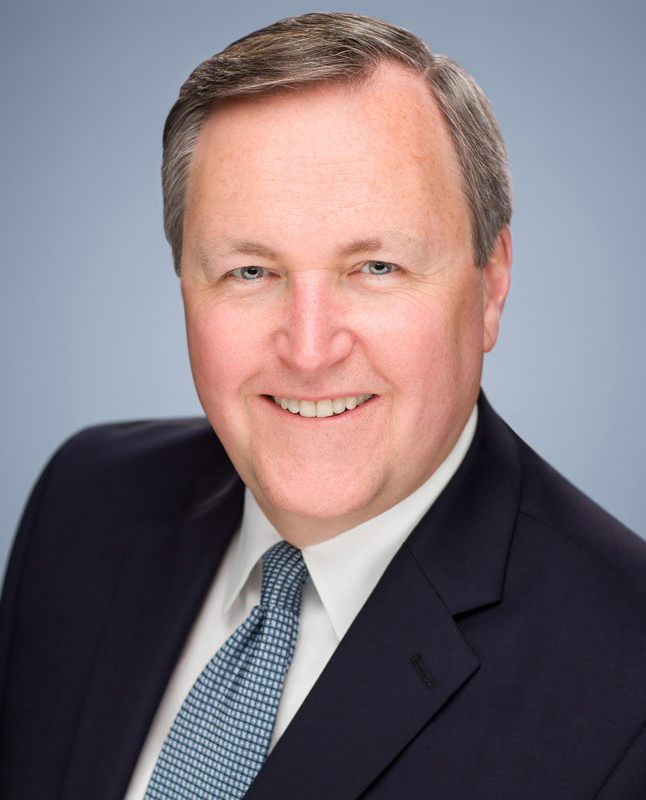 By Kerry Stackpole, FASAE, CAE, PMI CEO/Executive Director
By Kerry Stackpole, FASAE, CAE, PMI CEO/Executive Director
In the face of escalating complexity, systems leadership has emerged as an essential mindset for plumbing manufacturing CEOs who must lead not only companies but ecosystems. The post-pandemic economy, geopolitical volatility, workforce realignment, technological disruption, and growing demands for sustainability have converged to create a business environment that is no longer simply complicated—it is deeply complex and often contradictory.
Traditional leadership approaches that focus narrowly on efficiency, hierarchy, or short-term results are ill-suited for this moment. To succeed, plumbing fixture and fitting manufacturing CEOs must adopt a systems leadership approach—one that empowers them to navigate interdependencies, embrace ambiguity, and orchestrate adaptive responses across diverse stakeholders.
I was initially introduced to systems leadership while attending the “Leadership and Mastery” course developed and taught by Peter Senge, originally at MIT’s Sloan School of Management. The course brought together systems thinking, organizational learning, and personal mastery, blending hard science with soft skills in a way that was groundbreaking for the time. Today, systems leadership has found a renewal under the guidance of venture capitalist Robert Seigel and former General Electric CEO Jeff Immelt, who together teach a course at Stanford University. Seigel and Immelt define systems leadership as the capacity to embrace—and thrive within—contradictory demands.
Plumbing manufacturers sit at the nexus of contradictory demands and the cross‑pressures of multiple, overlapping systems: supply chains, regulatory frameworks, labor markets, energy and water grids, and customer value chains. A disruption in one—be it unexpected tariffs, cybersecurity failures at port, or shifting water-efficiency regulations—can cascade through the others with unpredictable consequences. The temptation is to compartmentalize problems, assigning them to specific departments or viewing them through a purely operational lens. This siloed thinking can lead to blind spots and brittle responses.
Adopt a panoramic view
Systems leadership calls for the opposite: a panoramic view of the business environment, an understanding of how forces interact, and a commitment to addressing root causes rather than symptoms. It means asking—How does this policy shift affect our upstream suppliers and downstream customers? How does our automation plan impact employment? What interdependencies are we overlooking in our digital transformation strategy? For CEOs, systems leadership is not about controlling complexity—it’s about harnessing it. It requires the humility to admit what we don’t know, the curiosity to learn from others, and the courage to lead through influence rather than authority.
Plumbing manufacturing CEOs today are navigating a world of paradox. You are expected to simultaneously cut costs and invest in innovation, meet ESG goals and grow profitably, automate operations and retain skilled workers, and globalize supply while localizing relationships. Systems leadership equips you to hold these tensions creatively rather than choosing one side of the trade-off. For instance, rather than seeing automation and workforce development as opposing goals, a systems leader invests in both—deploying smart technologies to improve productivity while upskilling employees for higher-value roles. Instead of framing sustainability as a regulatory burden, the systems leader embeds it as a catalyst for product innovation, brand differentiation, and supply chain resilience.
This ability to reconcile competing priorities—to act decisively without becoming reductive—is one of the defining attributes of systems leadership, which can separate adaptive, future-ready organizations from those that simply react to external shocks.
No company operates in a vacuum
Perhaps most critically, systems leadership recognizes that no company operates in a vacuum. Plumbing manufacturing enterprises rely on vast networks of partners, suppliers, governments, and communities. CEOs must lead not only within their organizations but across systems—forming alliances, shaping standards, influencing policy, and collaborating in pre-competitive spaces where shared challenges demand shared solutions.
Your active engagement with Plumbing Manufacturers International, our work with industry consortia, and public-private partnerships are all vital arenas for leadership. PMI supports systems-minded CEOs who use these platforms not merely to advocate for short-term interests but to co-create long-term solutions on issues such as workforce pipelines, infrastructure investment, and sustainable materials management. In doing so, you shift from leading a company that reacts to complexity to one that helps shape the systems in which it operates.
Investing in systems leadership is not a soft skill—it is a strategic capability. As the plumbing manufacturing landscape becomes more interdependent and less predictable, your company’s ability to thrive will depend not just on how efficiently it produces but on how intelligently it adapts, partners and leads.
For today’s plumbing manufacturing CEO, systems leadership is not a buzzword. It is a lens, a discipline, and ultimately, a competitive advantage. It enables you to turn complexity from a threat into a differentiator—driving innovation, building resilience, and delivering value across the entire ecosystem. In the era ahead, the companies that succeed will not be the ones that resist complexity, but the ones whose leaders can navigate it with vision, agility, and a systems mindset.
Professor Opens PMI Members Eyes About AI
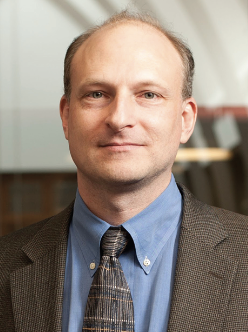 By Ray Valek, PMI Communications Team, Valek and Co.
By Ray Valek, PMI Communications Team, Valek and Co.
Boston College Professor Sam Ransbotham, Ph.D., presented his thoughts about artificial intelligence (AI) to Plumbing Manufacturers International members who participated in a recent PMI webinar titled “Eyes Wide Open – Developing a Mindful Understanding of AI Today.”
The co-host of the “Me, Myself and AI” podcast, Dr. Ransbotham provided examples of how AI is used to explore Mars with autonomous vehicles, improve the performance of car tires, summarize information on the Slack messaging app, help the World Wildlife Fund measure overfishing, and develop vaccines. “AI is no longer hypothetical. It’s not science fiction; it’s something that’s happening now,” he emphasized.
A survey conducted by Dr. Ransbotham shows that more than 70% of companies use some form of AI, with that percentage expected to increase. And while most employees report no or minimal use of AI at first, about half of them say they use AI after being prompted with questions about their use of products with AI components. “Most of us are using AI in ways we don’t realize,” even if it’s something as simple as spellcheck, he said.
Four ways to use AI
He mentioned four ways most plumbing manufacturing professionals can use AI: to improve ideas, make suggestions, summarize, and build prediction models. These utilities are as close as tools such as ChatGPT, Microsoft Copilot, Google Gemini, Apple Intelligence, Siri, Alexa, OpenAI, and others. All you need are rough drafts or data and questions to ask.
Dr. Ransbotham explained that AI can do some things faster or more efficiently than humans or automation, and vice versa, depending on the task. Computers are much faster at finding sequences in numeral data while humans can instantaneously recognize visual patterns. AI requires a tremendous amount of data and automation does not. When situations change, generative AI models adapt quickly while automation tends to lag.
To aid in writing and texting, “over the last two or three years, computer models have read and memorized virtually everything in the universe that’s ever been printed and used them to probabilistically pick the next word,” he stated.
AI can now do knowledge work
Dr. Ransbotham stated that AI technologies are increasingly capable of doing knowledge work, unlike the technologies experienced by humans up to now. He provided an example of a computer program that predicted what a judge would rule 79% of the time and an article stating that by 2030, students would be better able to learn from a robot teacher than a human one. “An important point is to focus on human agency—that people decide how we use tools. We can use them for good purposes or less-than-good purposes,” he emphasized.
We must consider what these innovations will lead to, and what will be left for humans. “A robot can make 2,400 shoes in eight hours, and that would take an employment of 200 people,” he explained. “It’s going to be hard not to get the robot. But if you do get the robot, then those people are out of a job, and who’s going to buy all these shoes?” Amazon is deploying more robots than employees, and he said, “One of my first jobs was in a warehouse doing exactly what a robot is doing, and I don’t know how people get a first job if the robot is doing that job.”
Despite the increasing capabilities of AI, people are figuring out that while AI can help us do our jobs, it’s not going to do everything for us, with most professionals viewing AI as a co-worker. “There’s still a lot that the tools and technologies don’t do, and so people are much less fearful about losing their jobs,” Dr. Ransbotham said. However, “if someone using artificial intelligence is able to do your job faster and better, they’re likely going to take your job.” Also, “in organizations that don’t use AI, maybe everybody loses their job, because some other organization that uses AI heavily will dominate.”
Using AI cautiously and well
He cautioned PMI members to not use proprietary data when using free or open AI. “There are paid models that you can use to prevent them from training on your data. And, as far as I know, all the models who say that they’re not using your data to train if you’ve paid are not doing that,” he stated.
He also encouraged PMI members to learn how to use AI tools of their choosing well rather than being overly concerned about which tool to use. “What’s going to happen is that model A will be better at something this week and model B will be better at something next week, and you’re not going to spend your time switching between different models back and forth to improve by only a little bit. What’s expensive is your time and learning how to use these tools. And so, I would spend time learning how to use a particular model well,” he said.
PMI members can view the webinar by logging in and going to the Webinars/Videos page under Technical/Regulatory: safeplumbing.org/members/webinars-videos. View AI research reports: tinyurl.com/s3k6yz63. Listen to the “Me, Myself and AI” podcast: tinyurl.com/mr2ym8jp.
PMI Urges DOE to Keep Existing Faucet Standard
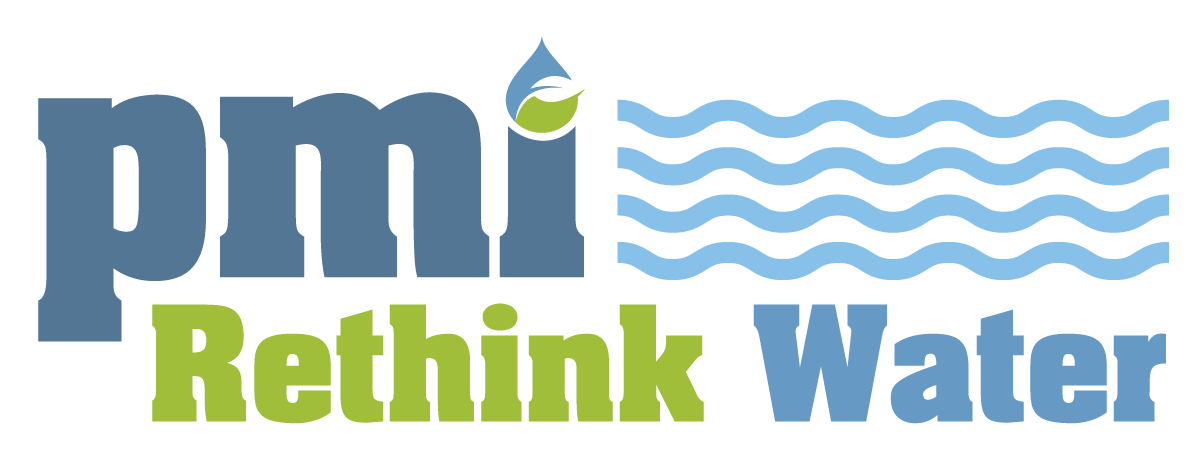 By Judy Wohlt, PMI Communications Team, Valek and Co.
By Judy Wohlt, PMI Communications Team, Valek and Co.
Plumbing Manufacturers International recently submitted comments to the Department of Energy, urging the DOE to maintain the existing energy conservation standard for faucets. In May, the DOE proposed rolling back energy and water conservation standards, targeting 47 regulations including rules relating to faucets and commercial pre-rinse spray valves.
The DOE is proposing to amend the faucet standard flow rate of 2.2 gallons per minute (gpm)/60 pounds per square inch (psi), which was adopted under the 1998 Energy Policy and Conservation Act, to allow a maximum flow rate of 2.5 gpm/80 psi. The Trump administration and the DOE want to reverse efficiency rules, incorrectly claiming that existing standards are burdensome and decrease consumer choice.
In July, PMI submitted a nine-page letter in response to the DOE’s May 16 notice of proposed rulemaking for Energy Conservation Standards for Faucets. The letter outlined why the DOE actions are unlawful, not economically justified, and unconstitutional. “The existing standard was lawful when adopted and was fully justified at that time under the criteria of the Energy Policy and Conservation Act (“EPCA”). It remains justified, but more to the point, DOE has not provided any evidence suggesting that the previous standard, to which DOE proposes to revert, would be economically justified,” PMI’s letter stated.
Focusing on the laws
PMI worked with Keith Bradley, partner, Squire Patton Boggs, to put forth the best legal arguments against this action, said Stephanie Salmon, PMI’s federal government affairs consultant.
One of the key points in PMI’s letter focuses on how the DOE would be violating the anti-backsliding provision of the EPCA by amending the faucet standard to allow increased water use. The provision states that a new or amended standard may not increase the maximum allowable energy use or decrease the minimum required energy efficiency of a covered product or equipment.
The DOE is also questioning whether its adoption of the faucets standard “resulted in an unconstitutional delegation of legislative power to a private entity,” PMI’s letter stated. “There was no such delegation, neither in DOE’s past rulemaking nor in the statute itself. The development of the 1998 rule that adopted the current standard shows straightforwardly that DOE, not the private standards bodies, exercised all the lawmaking power involved,” the letter added. While the American Society of Mechanical Engineers recommended the 2.2 gpm/60 psi faucet standard, the DOE “in its full discretion as the rulemaker under EPCA,” concluded that using the standard was sound policy.
Further, the DOE has asserted that the existing faucet rule wasn’t economically justified and should not have been adopted but hasn’t supported that claim, Salmon said. “The 1998 rulemaking was quite sound and not flawed in the ways DOE suggests. But even if it were, no agency has authority to correct its mistakes beyond ‘the period available for taking an appeal,’” the PMI letter stated. The appeal period was 60 days and expired decades ago.
American manufacturers would face higher costs, competitive disadvantages, and more
Amending faucet flow rates to a higher allowed flow rate would present several issues including higher costs to plumbing manufacturers, the need for a new testing standard, and the possibility of a flood of counterfeit faucets entering the U.S. market. It would also place many American plumbing manufacturers at a competitive disadvantage because they would need several years to develop and produce a new line of higher-flow faucets, Salmon said.
PMI doesn’t see this new faucet product category as necessary, she noted. Plumbing manufacturers have spent millions of dollars on research and development to provide the public with many styles of water-efficient faucets that are safe and achieve high customer satisfaction.
Projected costs to plumbing manufacturers could be millions of dollars per manufacturer, depending on the number of new faucets developed, tested, certified, and marketed under the new standard, noted the PMI letter. Moving away from the existing requirements will benefit foreign manufacturers by allowing them to sell faucets that currently cannot be sold in the U.S. because they don’t meet American drinking water safety standards.
The DOE will be reviewing comments on its proposed rulemaking and decide in the coming months whether or not to move forward with its proposed changes, Salmon said. PMI will continue to provide members with timely updates.
PMI25 Registration Opens, Exciting New Speakers Added
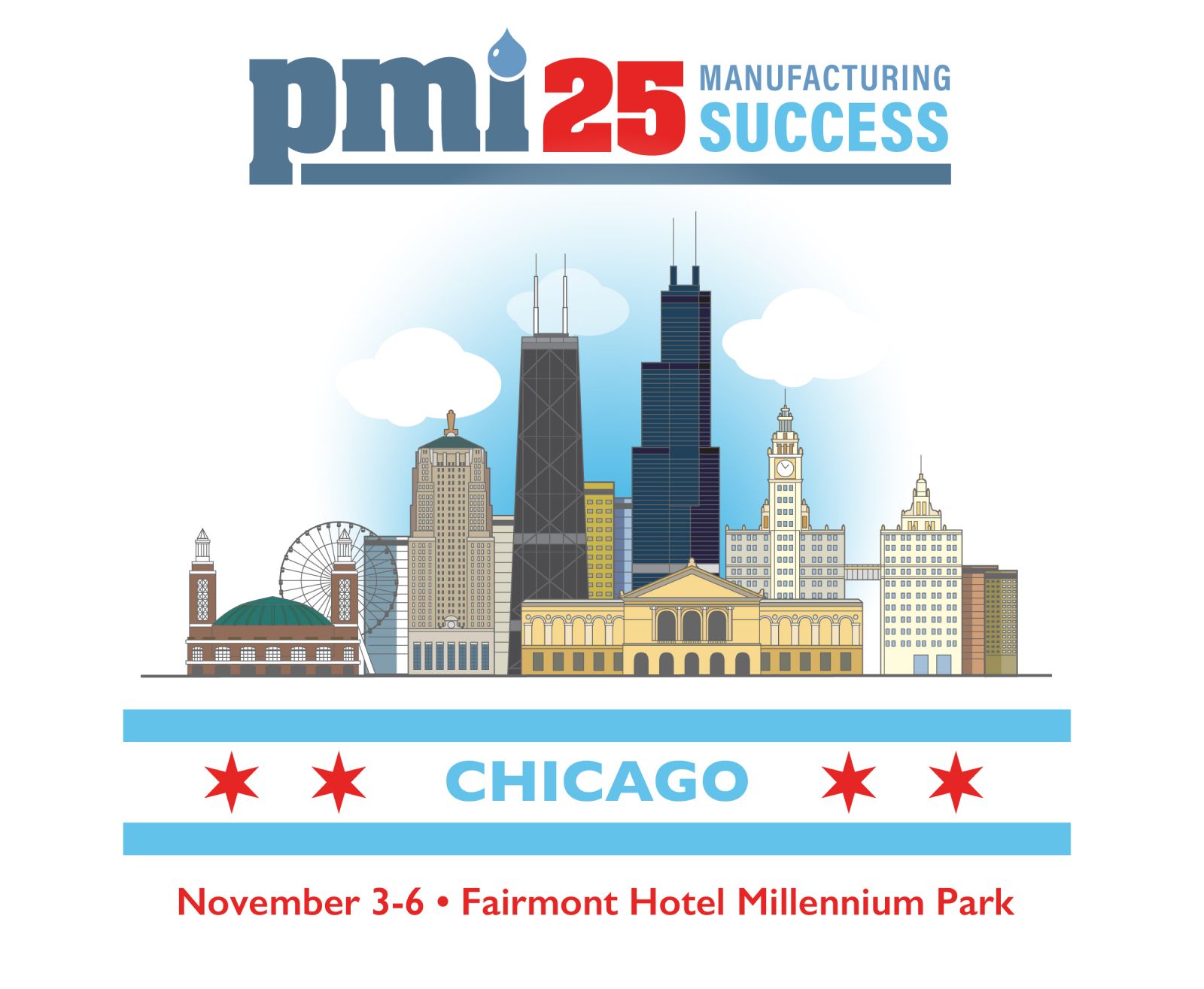 By Judy Wohlt, PMI Communications Team, Valek and Co.
By Judy Wohlt, PMI Communications Team, Valek and Co.
Registration is open for the PMI25 Manufacturing Success Conference, Nov. 3-6 in Chicago. New experts have been added to the program to discuss the critical topics of AI in manufacturing, tariffs, the economy, water infrastructure, and more.
Don’t miss award-winning documentary filmmaker Brett Culp’s keynote presentation as he shares powerful stories about ordinary people who have accomplished extraordinary things. Stephanie Klein, founder of Mindfire Mastery, will facilitate the PMI Inspiring Leaders Program on Nov. 3, focusing on how to build mental resilience by shifting from burnout to balance. And during the Women of PMI Breakfast on Nov. 5, Shelley Paxton will share how she walked away from her job as chief marketing officer of Harley-Davidson and into her “soulbbatical.” Her presentation will focus on redefining greatness and beating burnout.
The latest on AI, the future of manufacturing, Build America Buy America, and more
Thomas Kurfess, Ph.D., professor and chief manufacturing officer, Georgia Institute of Technology, and chief technology officer, National Center for Manufacturing Sciences, will explore “Present and Future Implications for AI in Advanced Manufacturing.” He’ll share insights into next-generation, hyper-connected production operations and business models that favor local and point-of-assembly manufacturing, which will use tools such as ChatGPT. Discover how augmented reality/virtual reality and artificial intelligence/machine learning will be propagated throughout the manufacturing enterprise via flexible cloud/fog operations, ensuring a state-of-the-art manufacturing economy.
Learn more about the “Strategic Benefits of Build America Buy America Certification” from Jason Hodell, partner, industrial and consumer goods segment leader, Cherry Bekaert Advisory LLC. He’ll explain the differences between the standard Buy American Act and Build America Buy America, their requirements and criteria, and will cover certification basics, revenue opportunities, and how the certification provides manufacturers with a powerful sales and marketing advantage, along with access to federal programs and funding.
Discover the latest on “Measuring Pressure Loss in Modern Plumbing Fittings” with Natascha Milesi Ferretti, supervisory research engineer, National Institute of Standards and Technology. She will discuss the pressing need for updated pressure loss data to allow for approaches that enhance water efficiency and quality, as modern plumbing systems incorporate materials such as CPVC, copper and PEX.
Justin Brown, Metropolitan Water Reclamation District in Greater Chicago, will discuss “Deep Tunnels, Backwards Rivers and Electrofishing: Chicago’s Water Infrastructure.” He will take attendees on a multimedia tour of the Chicago region’s world-famous water infrastructure, which includes the vast Deep Tunnel system and one of the largest wastewater treatment plants on earth. Find out how and why the Chicago River was reversed over 100 years ago, learn how green infrastructure partnerships are transforming the urban environment today, and how electrofishing is revealing the river’s thriving aquatic ecology.
Lisa Ragain, principal water resources manager, Metropolitan Washington Council of Governments, will present insights on recent Legionella and water supply research, and ITR Economics’ Lauren Saidel-Baker will present “PMI Market Outlook LIVE: Gearing Up for 2026.”
Providing an update on trade and tariffs will be Brooks Allen, partner, national security and international trade, Skadden, Arps, Slate, Meagher & Flom LLP. David Morell, partner, Jones Day, will discuss counterfeit plumbing products, and Rob Keith, membership and policy director for AMERIPEN, will provide extended producer responsibility legislative updates.
Jerry Desmond and Stephanie Salmon, PMI’s advocacy/government affairs consultants, will deliver the latest updates on California and federal advocacy and government affairs issues.
Other speakers will include Jenn Kovacs, senior director, community impact, MiTek, and executive board member and treasurer for the She Built Foundation; and Joel Brammeier, president and chief executive officer, Alliance for the Great Lakes.
Elevate your company’s visibility
Gain a wider audience reach, enhance your corporate image, and highlight your company’s latest products and services by sponsoring PMI25. This year, there’s a new sponsorship opportunity to give back to underserved communities, too.
All platinum, gold, and silver sponsorship levels offer ways to feature your company, with your name and logo prominently displayed in conference materials, onsite signage, and video. Your company’s name and logo will be showcased in PMI’s promo e-blasts, Ripple Effect, Inside My PMI, and social media posts about PMI25.
New this year is an event sponsorship opportunity for one company to lend a helping hand to those in need by sponsoring hygiene kits provided by World Vision, an organization that facilitates donations to programs that benefit children, families and communities in need. A kit-building station will be set up with essential hygiene items and note cards with your company logo. “This is a volunteer opportunity that everyone at the conference can participate in by building a kit and writing a note with an inspiring message to a person in need,” said Jodi Stuhrberg, PMI director of programs and administration. World Vision will distribute the assembled kits and note cards to the underserved and those dealing with the aftermath of natural disasters.
All event sponsorships are limited to one sponsor only, so apply soon! In addition to the kit-building event, your company can sponsor morning and afternoon coffee breaks, conference registration and lunches, the PMI reception and dinner, and a keynote sponsorship including podium signage and the option to introduce the speaker.
Register for PMI25 today: safeplumbing.org/pmi25
Learn more about how to be a PMI25 sponsor: tinyurl.com/8dknm8na.
Award-Winning Documentarian to Deliver PMI25 Keynote
 By Judy Wohlt, PMI Communications Team, Valek and Co.
By Judy Wohlt, PMI Communications Team, Valek and Co.
Brett Culp, founder of the not-for-profit Rising Heroes Project and a documentarian known for telling heroic stories, will present the keynote address on “Superhero Leadership in Uncertain Times and Instant Storytelling.”
Culp believes that leadership starts with the ability to view each challenge as an opportunity for growth and positive impact. Culp will share powerful stories about ordinary people who have accomplished extraordinary things. He will demonstrate how everyone has the opportunity and capacity to embrace leadership and make an impact.
“What I have seen in my work is that there are some very specific mindsets, some specific ways of being present, of being connected to the moment and to the mission that you’re part of that allow great leaders to make a positive impact,” he said.
Great leaders have an “empowerment mindset” to move forward as a mentor in the world, seeing their role as a coach who inspires their teams to be their best selves, he noted. “Do you see the people around you as an obstacle that you’re going to have to maneuver around and manipulate, or do you see them as a positive force to be unleashed in the world? Are you trying to empower the best in them to lift them up so that they can bring their talent?,” Culp asked.
Leaders and executives who develop the emotional intelligence required to lead a team to greatness understand the importance of connection, trust building, and being present in the moment with their team, he explained. Those skills provide leaders with the ability to respond quickly, particularly during uncertain times.
“The best leaders have that kind of emotional intelligence, that they’re listening, they’re diving in, but that also starts with an expectation that the people around you have something great to contribute, that there is magic in every single person on your team and unveil that to the world,” Culp stated.
Good storytelling is another skill that strong leaders possess. “The best leaders are also the best storytellers because they create a vision of reality of where we are and what’s going on,” he added.
Culp said he’s looking forward to sharing at PMI25 what he’s learned about storytelling through his camera lens. “We’re going to find out that our worlds are much more similar than we thought. That the work that we’re doing as leaders, as storytellers, as creators is very much the same when we get down to it. And that’s what I’ll be excited to explore with you when we’re together,” he noted.
Women of PMI Speaker Shares Strategies to Build Confidence
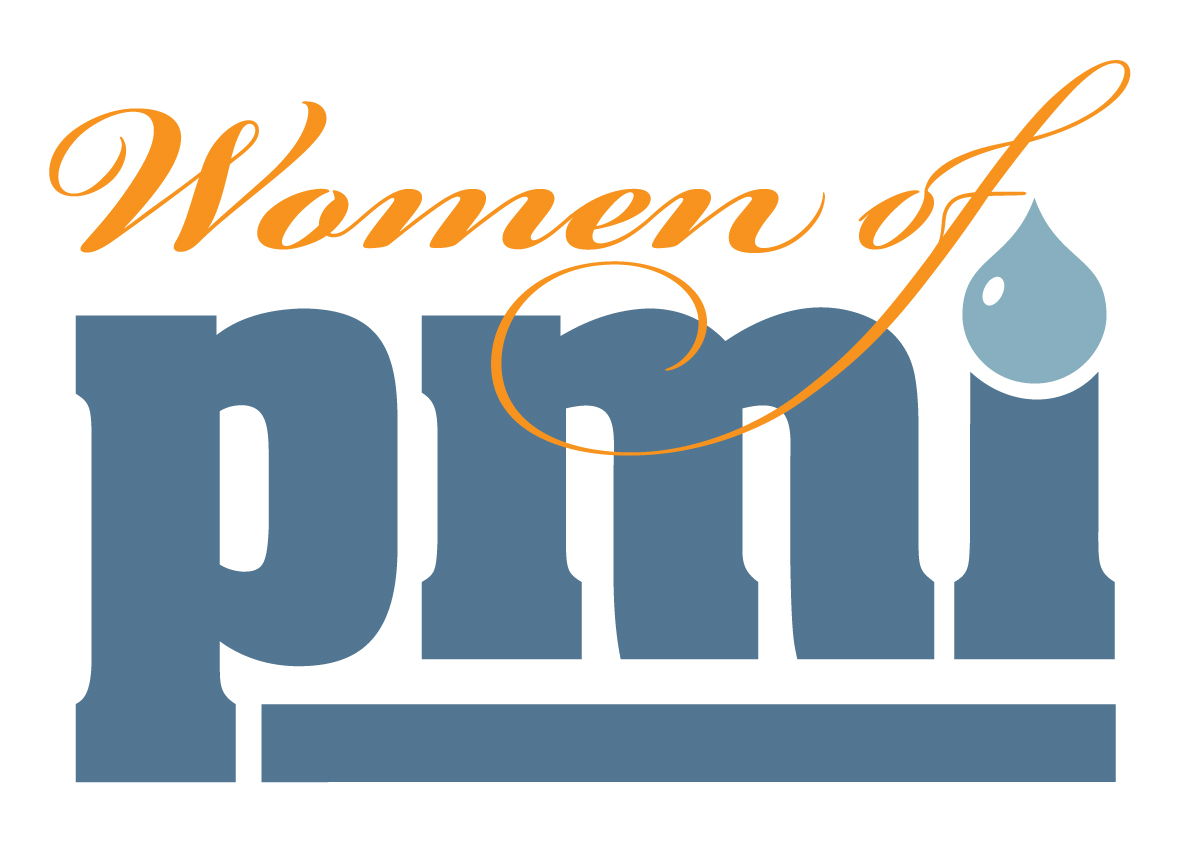 By Judy Wohlt, PMI Communications Team, Valek and Co.
By Judy Wohlt, PMI Communications Team, Valek and Co.
“Confidence is a daily choice, even when it’s hard. It’s like a muscle—the more you train it, the stronger it gets,” Sheena Yap Chan told the attendees of a recent Women of PMI program, “Women Breaking the Mold: Building Confidence in an Ever-Changing Landscape.”
Yap Chan, Wall Street Journal bestselling author of “The Tao of Self-Confidence,” explained how confidence isn’t only “nice to have” but a foundational leadership skill. She shared tips and strategies to challenge cultural conditioning, build a self-confidence toolkit, and steer away from perfection.
Only one in five women describe themselves as “very confident” in the workplace, she noted from a KPMG women’s leadership study. This lack of confidence keeps individuals from pursuing career promotions, new roles, or speaking out—not because they’re unqualified, but because they doubt themselves. This self-doubt often masks itself as “humility” or “perfectionism,” but it quietly sidelines talent, Yap Chan said.
Rewrite the narrative
“We’re taught to play small. Many of the confidence barriers women face are learned behaviors, shaped by cultural, social, and even family expectations,” she explained. She encouraged attendees to question and reframe these cultural and generational patterns to rewrite the narrative and reclaim their power.
From an early age, girls are often told to prioritize being liked over being respected, and that acting too boldly means being aggressive, Yap Chan stated. “Assertiveness is not aggression—it’s bringing clarity, setting boundaries, and allowing self-respect,” she explained.
She shared how family circumstances and culture can color one’s perspective. She once doubted herself and her skills as a leader and writer, she said. Yap Chan learned how to stretch her comfort zone, do things that scared her—such as writing a book on leadership, and starting her podcast, “The Tao of Confidence.”
“When you change your narrative, you don’t just uplift yourself—you become a role model for the next woman watching,” she said.
A framework for building confidence
Yap Chan shared the three pillars that will help individuals build a framework of confidence: self-trust, self-advocacy, and self-belonging.
Self-trust starts when you believe you’re capable—even when you’re still learning, she encouraged. “No one ever feels 100% ready. If we don’t take action, then nothing happens. Just keep moving forward. Confidence follows action,” she explained.
Embrace rejection in your career and life, she emphasized. “Rejection is hard, but it’s also part of the process,” Yap Chan stated. “Getting rejected for a job or promotion might be ‘No, not for now,’ but your turn will come. Better to apply and not get it, instead of thinking ‘What if?’”
You are your own best advocate, she said. “Whether it’s negotiating a raise, speaking up in meetings, or asking for what you need, self-advocacy is how you build influence,” she noted. “No one can speak for your value the way you can.”
Self-belonging means embracing your background, your story, and your strengths—even the parts you were once told to hide, Yap Chan stated. “True confidence comes when you stop trying to fit in and start showing up as your full, authentic self. When you believe you belong, you give others permission to believe it too,” she added.
Building a self-confidence toolkit
Having a toolkit when self-doubt shows up will help you push through it, she emphasized. “Think of your toolkit as your go-to set of inner resources—your go-to quote or mantra, reminders of past wins, a mentor you can text, and a playlist that puts you in power mode,” she said.
Seek out small daily acts of courage—where you step outside of your comfort zone, even a little; routines that ground you; ways to practice visibility, such as speaking up in meetings and sharing your wins with colleagues; and methods to reframe failures by looking at them as data points from which to learn—not as defeats, Yap Chan shared. “Find a woman from the Women of PMI who can be a support to you,” she added.
PMI members can view Yap Chan’s presentation slides on the PMI Webinars/Videos page (tinyurl.com/dyfpppxw).
PMI Annual Report: Finding Common Ground
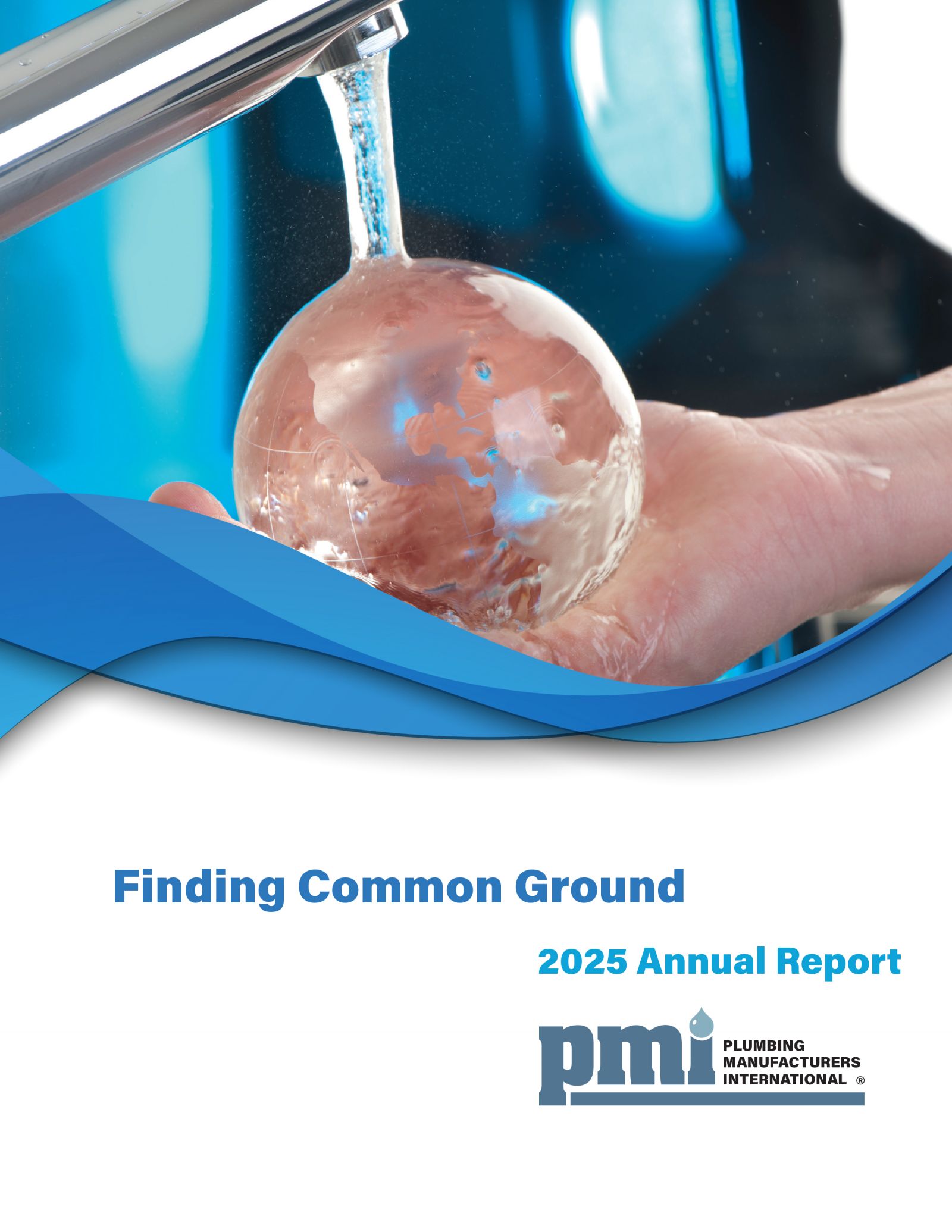 By Ray Valek, PMI Communications Team, Valek and Co.
By Ray Valek, PMI Communications Team, Valek and Co.
The 2025 Plumbing Manufacturers International Annual Report once again finds PMI and its members in the position of proactively finding sensible common ground as debates about the critical issues of the day swirl around us.
This role as mediator is not new to PMI or its members. Over the years, the plumbing manufacturing industry has learned that participating in the debate is more productive than fighting or fleeing it. The industry’s responsibility to customers, business partners, and our companies is to stay relevant, trustworthy, and in the room where decisions happen.
PMI first began establishing this business posture when the debates leading up to the Energy Policy Act (EPAct) of 1994 and the establishment of the WaterSense program in 2006 were occurring. At these key moments in plumbing manufacturing history, PMI and its members realized that, by contributing to solutions rather than by being simply opposed to proposed actions, they would be valuable to the powers that be. By gaining a seat at the table while the EPAct and WaterSense were being developed, PMI and its members helped to establish harmonized federal water-efficiency standards and specifications and mitigated the adverse effects created by the patchwork of state regulations.
Today, as those standards and specifications are called into question and our industry grapples with the inflationary effects of tariffs, PMI again finds itself at a crossroads—whether to oppose what is happening or to participate in the process of finding a sensible common ground. PMI chooses to be proactive and find common ground.
This year’s annual report again demonstrates the ability of PMI and its members to develop sensible and valuable solutions to many of the challenges facing our society, no matter what the government policies are. PMI members continue to build bridges to prosperity through free trade, to make water a sustainable resource, to foster productive and diverse workplaces, to extend innovation into all aspects of business operations, and to fulfill public health and safety responsibilities.
By contributing scientific data and common sense to all discussions, the plumbing manufacturing industry has earned a reputation among federal and state policymakers, peer industry groups, and the media as a credible and trustworthy voice. The examples in this report bear this out.
Read the 2025 PMI Annual Report: tinyurl.com/2692293r.
